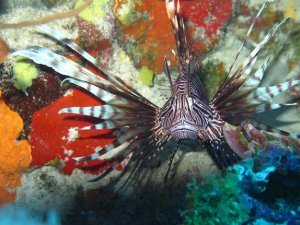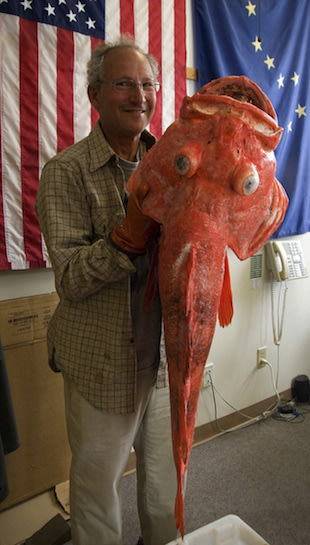LA JOLLA, Calif. (AP) — Just beyond the breakers at La
Jolla Shores Beach, hundreds of dark figures cruise through the sandy
shallows like a scene in a horror movie.
In most cases, the sight of one shark, much less hundreds, would spark panic.
The leopard sharks of La Jolla induce a different response.
Instead of racing toward shore, visitors here head out toward the deeper water to get a closer look.
And for those who get the chance to swim with the sharks, the experience is unforgettable.
"I've been doing it for years and I still go out and swim with them,"
said Ezekiel Morphis of HBK Sports, which offers kayaking and
snorkeling tours with the sharks. "I think it's awesome."
The leopard sharks come close to shore from June to early December,
peaking between August and September, when hundreds congregate along a
small stretch of this beach north of San Diego.
The sharks are mostly pregnant females and juveniles are rarely seen,
so scientists believe they gather here to help with the gestation
process.
Because of a submarine canyon just offshore, the waves at La Jolla Shores
tend to be smaller, which keeps the colder water of the deep from
mixing with the warmer water of the shallows. With the small waves and
warm water, it becomes a perfect place for the cold-blooded leopard
sharks to hang out before giving birth someplace else.
"What these females are essentially doing is incubating," said Andrew Nosal,
a postdoctoral researcher at the Birch Aquarium in La Jolla. "They've
developing embryos like a mother bird would sit on the eggs to keep them
to warm."
That's all interesting, but we know what you're thinking: Isn't it dangerous to swim with sharks in the open ocean?
No, at least not with these sharks.
Leopard sharks, unlike larger, fear-inducing species like the great
white, are non-aggressive and actually a bit timid, darting away
whenever there's a commotion in the water.
Leopard sharks also have small mouths and teeth — they feed on
crustaceans, shrimp and bony fish — so even if they did bite, it
wouldn't cause nearly as much damage as some of the larger fish swimming
around.
It's still the ocean, though, so there's always the chance larger
sharks might come in to feed, but attacks on leopard sharks near La
Jolla are almost unheard of.
"There's always a small risk of danger when you swim with animals,"
Nosal said. "But leopard sharks are generally non-aggressive. They're
actually quit skittish and can be quite difficult for snorkelers to
approach. The best way to swim with these animals is to float because
kicking or any kind of noise tends to scare them away."
Despite knowing the sharks are docile, it still can be a bit
unsettling on the first encounter, even for the adventurously inclined.
On days with calm winds and waves, the water is exceptionally clear,
making it easy to see the distinctive dark stripes and spots on the
backs of the sharks as they swim around people's legs or underneath
those who are floating on the surface or in kayaks.
When the water gets rougher, the sand and seaweed stir and swirl
around, sometimes dropping the visibility to a few feet (meters). The
cloudy water creates an eerie underwater scene, the shadowy figures of
the leopard sharks that reach up to 5 feet (1.5 meters) long seeming to
appear out of nowhere and disappearing just as quickly.
Clear water or not, the reaction for first-timers hits a wide spectrum.
"We get everything from not much reaction to absolute terror to
absolute elation," Morphis said. "I think people have a lot of
interesting views on sharks whether they've been educated that they're
fairly harmless or not."
Whatever fear people might have usually doesn't last long.
After a few minutes of watching sharks swim around their legs or
below them, the fear is usually taken over by amazement, almost a
feeling of one with nature as these majestic animals cruise around in
the open ocean.
"I like to think of leopard sharks as a friendly ambassador for
sharks in general," Nosal said. "It's a really great way for people to
overcome their fear of sharks, to see that not all species are
potentially dangerous, that this one really is harmless, yet they really
do look like sharks. These are not rinky-dink animals. They look like
sharks, they're rather large and to see so many at one site is really
impressive. I've been out there and been surrounded by easily 50 of
these animals at once and it's very impressive."
___
If You Go...
LEOPARD SHARKS IN LA JOLLA: Prime viewing season for leopard sharks at La Jolla Shores Beach,
located north of San Diego, peaks between August and September. From
downtown San Diego, take Intrastate 5 north to the Highway 52/La Jolla
Parkway exit. Follow La Jolla Parkway west until it merges with Torrey
Pines Road, then go north on La Jolla Shores
Drive. Turn left on Calle Frescota, which dead ends into La Jolla
Shores Park. There is a public parking lot or you can park on the
residential streets above the beach. The prime spot for the sharks is in
front of the Marine Room restaurant at La Jolla Beach and Tennis Club.
BIRCH AQUARIUM: http://aquarium.ucsd.edu
HBK SPORTS: http://www.hikebikekayak.com


















